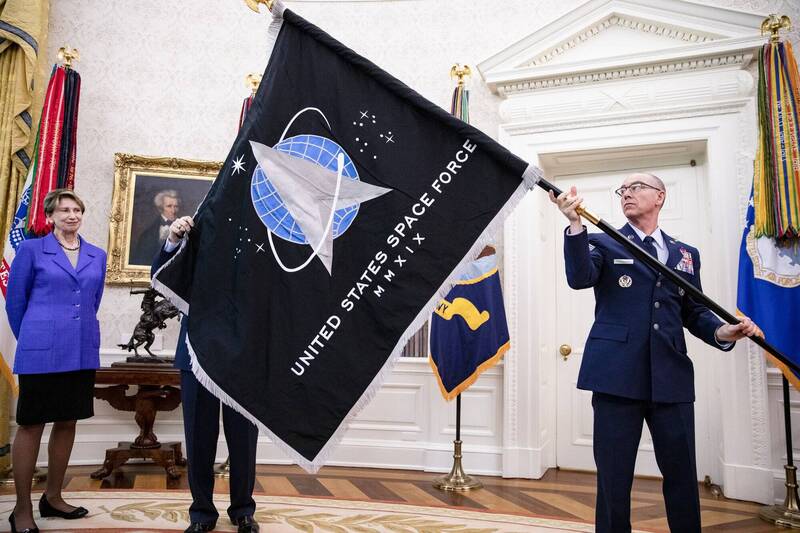The U.S. Space Force is starting to set up a regional command in South Korea this month. This will be the U.S. military's second Space Force command outside the continental United States after Hawaii.
The U.S. Space Force flag is displayed in the Oval Office of the White House.
(Bloomberg file photo)
[Central News Agency] Nikkei Asia reported that the U.S. Space Force started to establish a regional command in South Korea this month, and South Korea also integrated its air force and space-related units into a space combat squadron, which is expected to use satellites to strengthen reconnaissance.
The two countries intend to closely monitor North Korea's nuclear and missile activities.
North Korea is believed to have successfully tested an intercontinental ballistic missile capable of reaching the continental United States in November, Nikkei Asia reported.
Please read on...
South Korea's Ministry of Defense explained the new measures at a news conference.
Yonhap News Agency reported that this will be the second Space Command of the U.S. military to be established outside the continental United States after Hawaii.
The South Korean Air Force stated that it expects the space combat squadron to further improve the efficiency of space operations. At the same time, it emphasizes that the information obtained from space will be used in the field of national defense, and will also promote cooperation with the US Space Force stationed in South Korea in the future. "We plan to strengthen the joint space operations of the US-South Korea alliance. ability".
In addition to the United States and European countries, China and Russia are also developing space resources for security reasons.
Satellites are widely used in the military, including reconnaissance equipment and facilities such as missile launch sites, detecting the dynamics of missile launches, and collecting information on the location of weapon systems.
In addition to demonstrating the ability to launch intercontinental ballistic missiles, North Korea is also developing a variety of hypersonic missiles, including the "hypersonic glide vehicle" that can change the flight trajectory after being lifted into the air. It is said that compared with traditional ballistic missiles that use parabola to predict the flight trajectory, Harder to detect and intercept.
Therefore, there is an increasing need to develop satellite detection technology to detect missile launches and track flight trajectories at an early stage.
